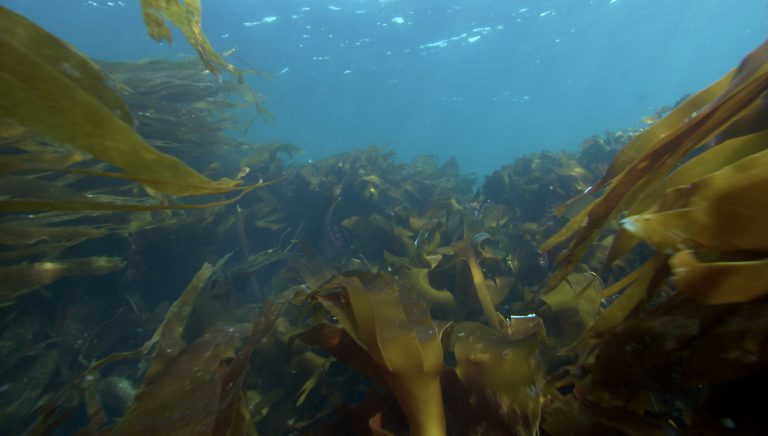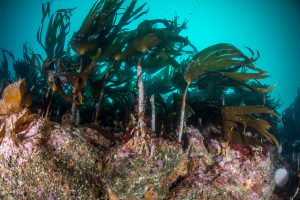Kelp forests capture three quarters of the net carbon fixed in the sea
Kelp is a large brown seaweed that grows on rocks from the low tide mark to depths of 45m.
Kelp fronds can be many metres long, forming submerged forests all around Scotland’s coasts. They are among the most productive and dynamic ecosystems on Earth.

Kelp beds are a Priority Marine Feature in Scotland. They provide food and shelter for a wide variety of animals which support food chains for commercially significant animals as well as birds, seals and otters.
They also play an important role in recycling coastal nutrients, providing coastal protection from storms by absorbing wave energy and helping to fight climate change by sequestering ‘blue’ carbon.
Kelp beds support red seaweeds, sea anemones, sea firs, sea squirts, sponges, soft corals, amphipods, two-spotted goby, wrasse, pollock and saithe. The holdfast (roots) of kelp provide a habitat for a diverse range of animals, typically between 30-70 different species.
History
In many island communities, kelp washed up on the shore was spread on the soil to promote crop growth. In the 18th and 19th centuries, crofters in Scotland also collected kelp for industrial purposes. It was used to produce soda ash, for soap and glass-making. The economic collapse of the kelp industry in the 1820s was one of the driving forces in emigration from the Hebrides to North America.
Threats
The Scottish Government is considering proposals to harvest kelp mechanically as a raw ingredient for biopolymers, by pulling it up from the seabed using specially adapted boats. An official review of the rules governing seaweed harvesting is under way. At present it is not permitted to use methods that would damage the plants’ ability to regrow.

Kelp beds
Laminaria digitata, Alaria esculenta, Laminaria hyperborea, Laminaria saccharina

Depth: Subtidal – 45m

